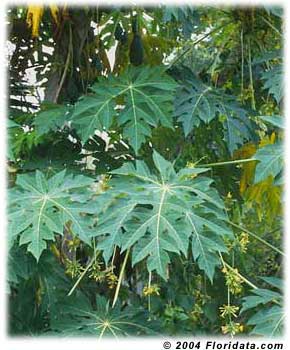ADAPTATION
 |
| Picture Courtesy of Floridata.com |
these plants commercially.
Carica papaya is sensitive to its environment. It reacts to cold environments in negative ways. It can survive as cool temperatures for a little while, but the quality of the fruit declines. Prolonged exposure to cool temperatures will eventually kill the plant and frost or temperatures below freezing (32ºC) will kill the plant much quicker.
The Carica papaya thrives best in tropical environments. It requires heat all year round to
 |
| Picture courtesy of Floridata.com |